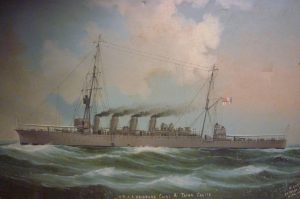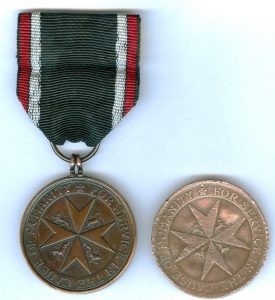- Author
- Swinden, Greg
- Subjects
- History - general, Ship histories and stories
- Tags
-
- RAN Ships
- HMAS Brisbane I
- Publication
- March 2016 edition of the Naval Historical Review (all rights reserved)
By Greg Swinden
The inter war period (1919-1939) is often considered a time of little activity for the RAN, but in reality the fleet was constantly active. One of the activities during the 1920s was the exchange of an RAN cruiser with the Royal Navy; generally in UK waters or the Mediterranean. However from February to August 1925 HMAS Brisbane served on exchange duty in the Far East with the 5th Cruiser Squadron of the Royal Navy. Her place on the Australia Station was taken by HMS Concord.

These exchanges were considered important by both navies as they enhanced their interoperability and allowed the RAN access to new training, tactics and doctrine being developed by the much larger RN. The exchanges were always popular with the crews as it allowed them the opportunity for travel off the Australia Station, but some Labor politicians raised the fear that Australian warships could become embroiled in a British imperial action without approval from the Australian Government. The Bruce Liberal Government stated that while the senior British commander could use the Australian warship to safe guard lives and property any action beyond this required Australian Government approval.
Brisbane operated throughout the China Station during her exchange with the RN, including port visits to Singapore, Port Swettenham (now Port Klang) in Malaya, the main British naval base at Wei Hai Wei (now Weihai) in China, Hong Kong and she was also the first RAN vessel to visit Japan when she berthed at Yokohama in May 1925. In July Brisbane was at Wei Hai Wei when she was dispatched to Hong Kong to provide assistance during a general strike. On arrival men from the cruiser were put ashore to maintain civil order and also operate the coal fired power station, harbour ferries and trams – perhaps stretching the rules on the employment of Australian personnel.
One of Brisbane’s officers distinguished himself during this period. British born Warrant Shipwright Robert Cargin had joined the RAN in 1916 as a direct entry Shipwright and was promoted to Warrant Officer in 1922.

On 18 July 1925 he was ashore visiting friends in Hong Kong when a major landslide occurred in the suburb of Po Hing Fong. Several houses were destroyed and 73 people lost their lives. Cargin took part in the rescue efforts and was subsequently awarded the Bronze Life Saving Medal of the Most Venerable Order of the Hospital St John of Jerusalem for ‘Conspicuous gallantry in saving life at imminent personal risk in connection with the Po Hing Fong disaster at Hong Kong in July 1925’.
Brisbane departed the China Station in August and returned to Australia via Tarakan in Borneo. On arrival in Sydney in October 1925 she was decommissioned and many of her ship’s company, including Warrant Shipwright Cargin, were transferred to her sister ship HMAS Melbourne so that ship could deploy to England on exchange with the RN.
Note:
The Life Saving Medal of the Order of St John was instituted in 1874 as at that time there was no national award available for bravery in the saving of life of civilians on land. The Albert Medal, instituted in 1866, was for saving life at sea only and was not extended to include brave acts in saving life on land until 1877. Unlike the Albert Medal the Life Saving Medal of the Order of St John can still be awarded today.




